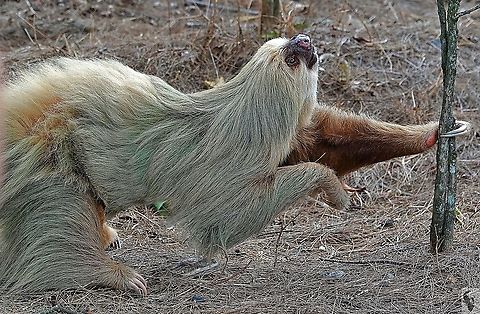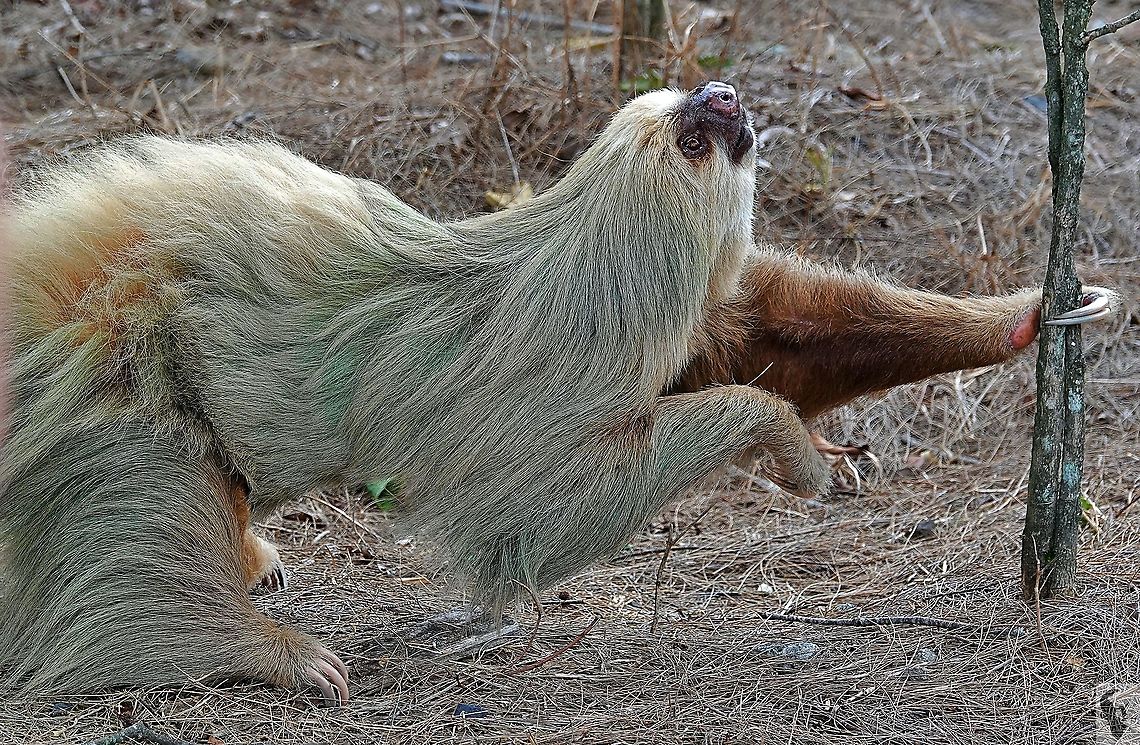
Hoffmann's two-toed sloth, also known as the northern two-toed sloth is a species of sloth from Central and South America. It is a solitary, largely nocturnal and arboreal animal, found in mature and secondary rainforests and deciduous forests. The common name commemorates the German naturalist Karl Hoffmann.
Similar species: Anteaters And Sloths
By Philip Booker
All rights reserved
Uploaded Aug 7, 2020. Captured May 6, 2019 22:59 in 708, Alajuela Province, Bajos del Toro, Costa Rica.


comments (12)
Posted 5 years ago
The Hoffman’s two-toed sloth (Choloepus hoffmanni) is one of the slowest mammals in the world. They are solitary, arboreal animals that can be found in forests from Central to South America.
They are so sedentary that algae grow on their hair! And, this isn’t just coincidental—they have a symbiotic relationship with the algae. The sloths provide an ideal home for the algae to grow, while the algae camouflage the sloths. Plus, the sloths eat some of the algae and even absorb some of the algal nutrients through their skin.
With long claws and a powerful grip, sloths are uniquely built for life in treetops. They move through the canopy at the rate of 40 yards per day as they munch on leaves, fruits, and flowers. They have a remarkably slow metabolism and the lowest variable body temperature of any mammal. They spend up to 20 hours per day sleeping! It can take a month for a sloth to digest a meal, and they only defecate once a week. Up to 2/3 of their body weight consists of partly digested food in their digestive tract! And, here’s something interesting: sloths don’t produce flatulence; instead, methane gas produced during digestion gets absorbed into their bloodstream and then breathed out. So, they have fart breath.
As incredible as it sounds, they eat, sleep, mate, and can even give birth while hanging upside down in trees! But, they do crawl down their tree once a week to defecate, and occasionally will go for a swim (they are great swimmers!). They are physically incapable of “walking”, but as you can see in the video posted along with this photo, they basically crawl when on the ground. {Photo and video credit: Philip Booker} #JungleDragon #Sloth #Hoffmanstwotoedsloth #Choloepushoffmanni
https://www.facebook.com/jungledragonwildlife Posted 5 years ago
Happy New Year! To say that 2020 was a challenging year would be an understatement. But, it was not without beauty or inspiration. During 2020, the JungleDragon community uploaded more than 17,000 photos and over 3,700 new species to the website!
Thank you to all of our members and supporters for your passion, dedication to nature and photography, and encouragement! You make JungleDragon special, and we appreciate you!
We are excited to continue sharing, inspiring, and learning about nature together with you in 2021! We wish you all the best for the upcoming year!!
Here are ten of the most popular photos shared on JungleDragon during 2020! Enjoy!! {See photos for credits} #JungleDragon #Nature #2020
https://www.facebook.com/jungledragonwildlife Posted 4 years ago